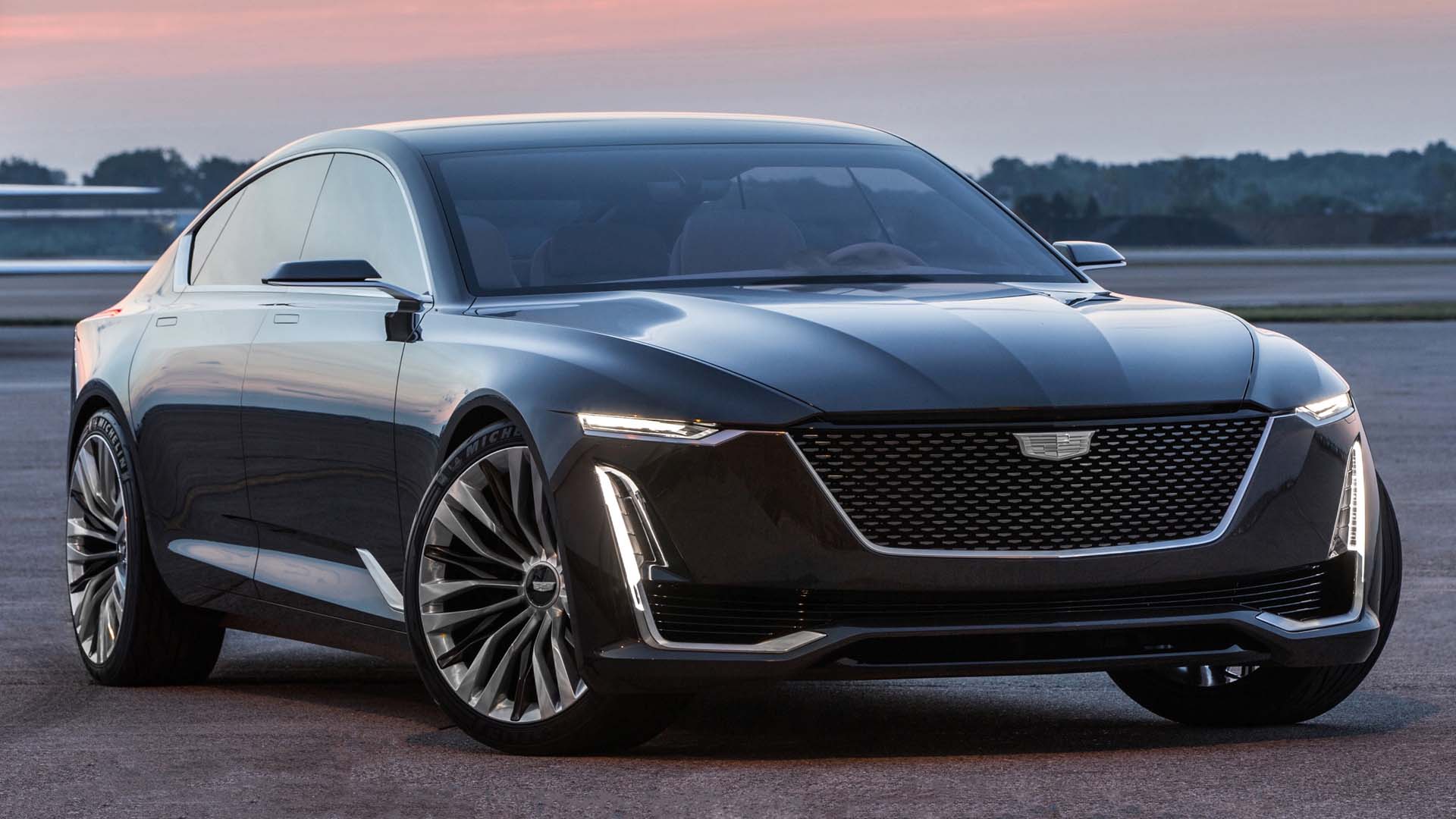

When it comes to flagships, Cadillac has never been short on concepts—the Sixteen, the Ciel, and the Elmiraj all loom large as dreams deferred in Cadillac’s recent past. The Celestiq EV is finally going to be the brand’s chosen halo vehicle after nearly two decades of stillborn range-toppers, but some of those concepts made it further down the line than you might think. In fact, the beautiful Cadillac Escala sedan concept from 2016 got tantalizingly close to development, Celestiq Chief Engineer Tony Roma told The Drive in an illuminating chat during Monterey Car Week.
How close? A production-intent drivetrain and price point were fleshed out, the former involving a V8 and some hybrid help.
First though, the thing that won’t surprise you is that the Escala production car would’ve had a V8 as the concept did. Not just any V8 and not only a V8, though. It was to be a plug-in hybrid, and it “was gonna have the 4.2,” Roma told me, referencing Cadillac’s twin-turbocharged Blackwing V8 the automaker built in very small numbers.

The Blackwing V8, also known as the LTA, was only ever installed in two trims of the low-volume CT6. After being produced for just a few years it suffered an unremarkable death alongside that large sedan. The impressive motor would’ve seen more life in the Escala, and its high output of 550 horsepower was to be complimented by electric power. Roma mentioned the system would’ve been a two-mode electrified transmission. That would’ve made it similar in concept to that of the ill-received Chevy Tahoe Hybrid’s system, but not the same. The combination would’ve given the car a total output of around 650 horsepower. Roma also noted the battery would’ve been about six kilowatt-hours, as opposed to the Tahoe’s measly 1.53 kWh unit.
Pricing would’ve put the Escala toe-to-toe with the Mercedes S-Class in the low six figures. All-wheel drive was set to be standard thanks to a classic transfer case setup—as opposed to an electrified front axle. About 10 miles of silent electric driving was projected. All of this development was strictly digital, though. No real-life Blackwing-powered PHEV Escala prototype was ever tested on the road.


And that’s probably for the best. The S-Class is the king of its segment and going after it with a plug-in hybrid made possible by Tahoe tech probably wouldn’t have gone well. In addition, Roma noted that hybrids will “only ever be transitional technology.” Pinning a flagship car on a hybrid drivetrain that’s bound to fade away didn’t seem right. It was the industry’s push for full battery-electric vehicles that ultimately killed the Escala and made Caddy’s chosen Flagship finally arrive in the form of the ultra-luxury Celestiq.
Clarification: A previous version of this story misstated the intended drivetrain for a production version of the Cadillac Escala. It would have been a similar system to that used in the Chevrolet Tahoe, but wouldn’t have been identical.
Got a tip? Email us at tips@thedrive.com